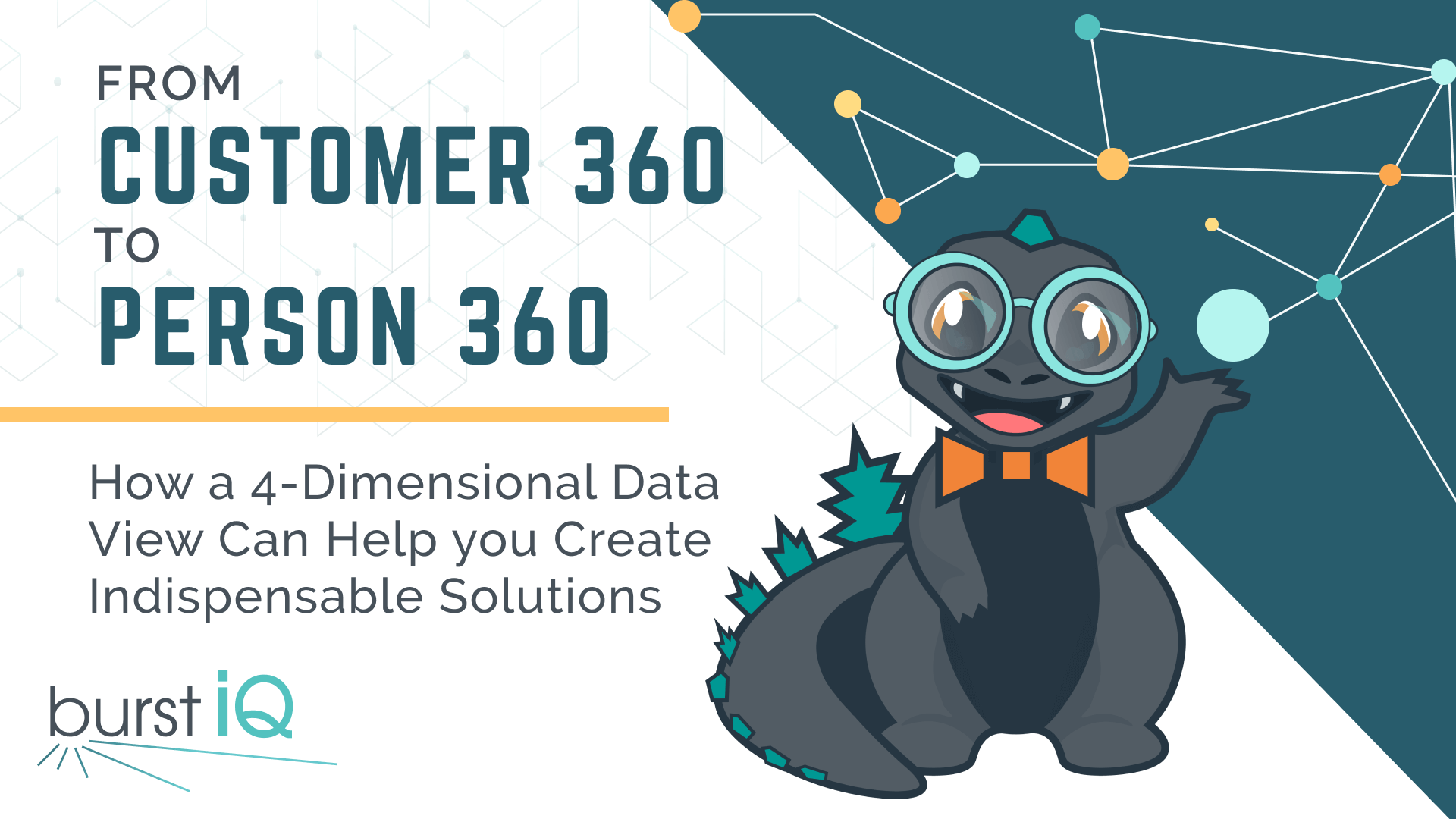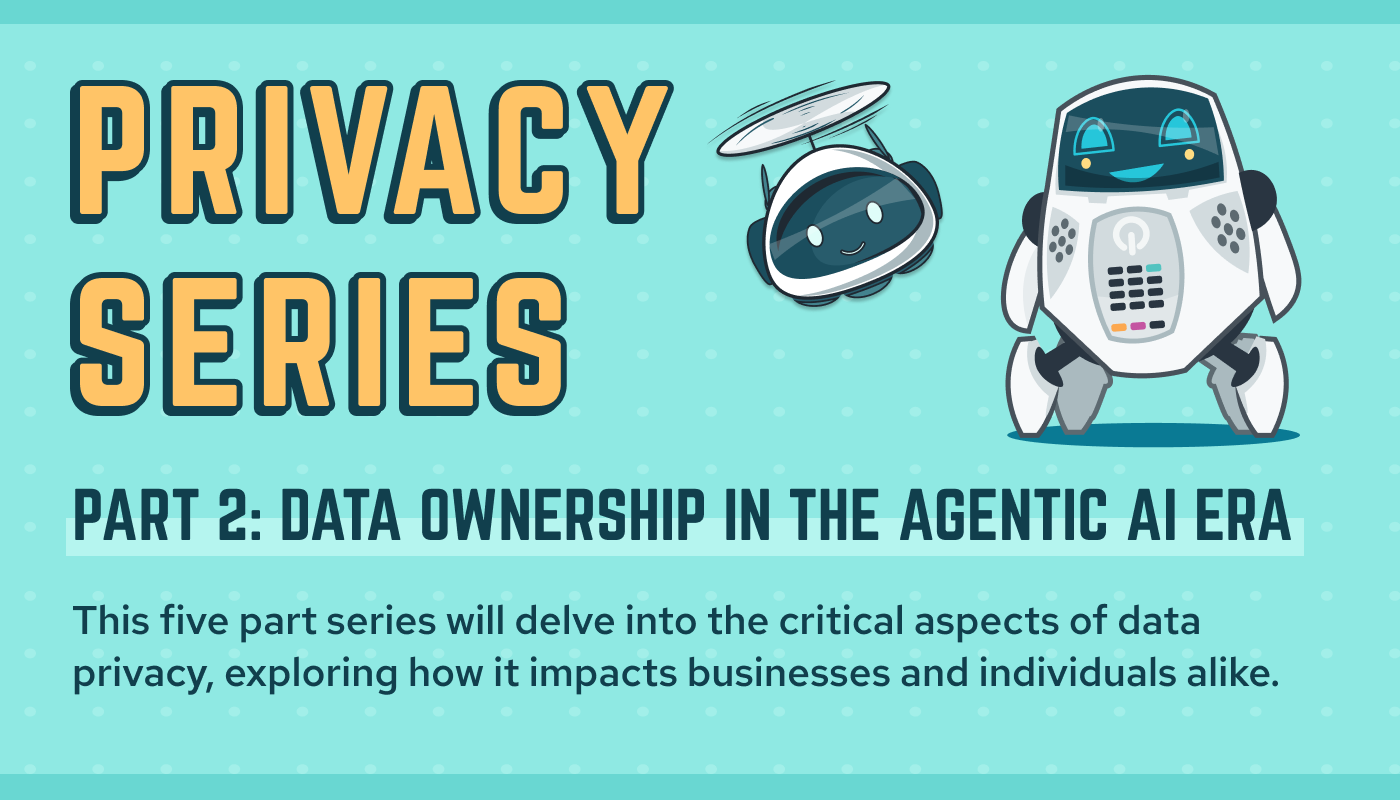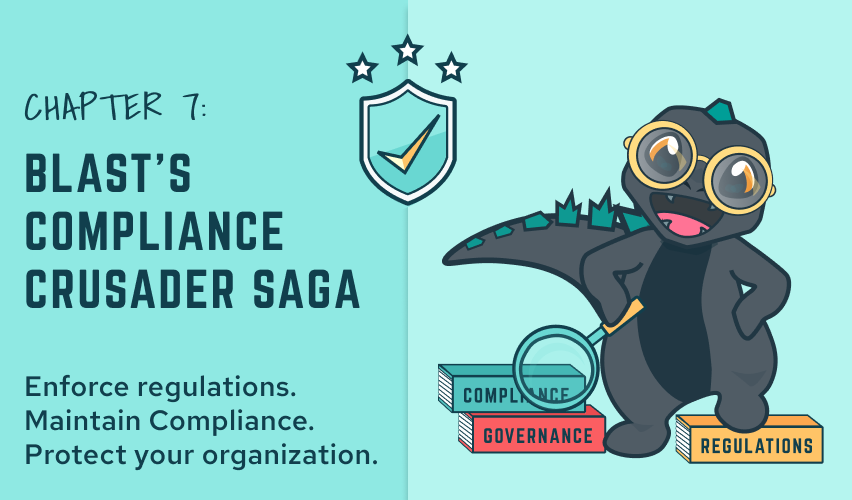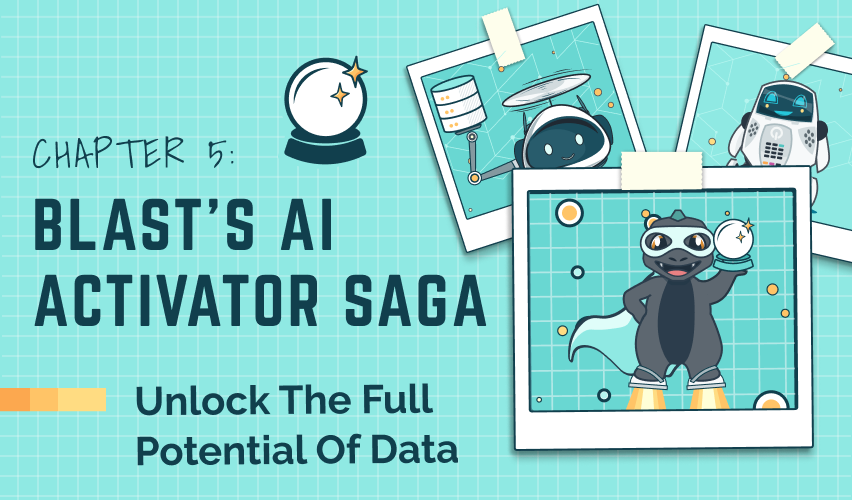The Urgent Need for
Consumer Data Ownership & Control
in the Age of AI
– Amber Hartley, Chief Strategy Officer, BurstIQ
In our increasingly data-driven world, consumer privacy has become a paramount concern. While current consumer privacy
laws have made strides in providing users with more control over their data, significant challenges remain.
This Knowledge Burst explores the limitations of existing regulations and emphasizes the importance of direct data ownership and control for consumers, especially in light of the exponential growth of artificial intelligence (AI). Additionally, we highlight the need for more modern government technology solutions that enable inter-agency coordination, data unification, and accountability.
The Illusion of Control
On the surface, the recent proliferation of consumer privacy laws offers a glimmer of hope that consumers will have greater power over how their data is used. Companies must now provide users with more granular control over their data through user-configurable security settings and data-sharing preferences. However, upon closer inspection, these regulations fall short in several critical areas.
First, current consumer privacy laws fail to confer actual data ownership to consumers. While users may have the illusion of control with toggles and click boxes at the app layer, companies still maintain a firm grip on the data itself. This means that even if a user opts out of data sharing, companies can still find ways to monetize and share that data without the user’s explicit knowledge or consent.
Second, enforcement of these laws often relies on user click-throughs and dense legal contracts, where dispute resolution heavily favors the company. This power imbalance leaves consumers at a distinct disadvantage, with little recourse when their privacy is violated.
These current regulations assume a Web 2 world, in which data is owned by the company that physically controls the database. However, data privacy technologies have advanced significantly in the last 10 years. The next wave of consumer privacy regulations needs to go beyond application-based privacy settings and instead provide for consumers’ direct data ownership and control.
The AI Data Ownership Imperative
The emergence and rapid adoption of AI further underscores the urgency for direct consumer data ownership and control. Without adequate consumer protections, consumer data can be easily harvested to create eerily accurate digital twins – AI personifications that mimic an individual’s appearance, speech patterns, and behavior. These digital doppelgangers can be used by companies to predict and influence consumer behavior with unprecedented precision, making it nearly impossible for individuals to resist targeted marketing and manipulation.
But the dangers don’t stop there. In the wrong hands, these personal AIs can be weaponized to create deep fakes virtually indistinguishable from the real person. Imagine a world where your digital persona can be hijacked and used to spread misinformation, commit fraud, or worse – all without your knowledge or consent. This represents a significant threat to individuals’ online identities and privacy.
The solution lies in giving consumers direct ownership and control over their data. By empowering individuals to decide what data they share with companies and AI-enabled services, we can create a future where personal AIs serve the interests of the individual, rather than being exploited by third parties.
Regulating the Wild West of AI Data Ecosystems
As data becomes more complex and interconnected, the need for robust regulation becomes increasingly apparent. Data ecosystems, where individuals and businesses interact and share data for AI and monetization purposes, are quickly becoming a reality. Without proper oversight, they risk becoming a digital Wild West where consumer privacy is routinely trampled in the pursuit of profit, not unlike the current Web2 world we live in today.
Governments must be proactive in regulating these ecosystems to prevent the emergence of data monopolies – where a single company or group of affiliates effectively controls the flow of data, stifling competition and innovation. This requires a new approach to antitrust regulation that goes beyond traditional corporate structures and addresses the concentration of data control.
Leading by Example
As governments grapple with these challenges, they must also lead by example in their technology practices. Governments can demonstrate the benefits of data unification and contextualization by adopting trusted data ecosystem platforms that enable data unification, real-time coordination, and traceability across agencies.
These platforms can help break down data silos, improve analytics and AI capabilities, and increase operational efficiency. By leveraging AI and trusted data layers, governments can ensure that data remains consistent and accurate across agencies while maintaining clear data provenance records.
Most importantly, governments have a unique opportunity to build public trust by directly conferring ownership of specific data on citizens. Governments can set a powerful precedent for the private sector by empowering individuals with control over their data. Government agencies must play a vital role in leading by example in data management. Transitioning to trusted data ecosystem platforms will enable better coordination and collaboration within and across agencies. These platforms will facilitate the unification and contextualization of data, leading to improved analytics, AI capabilities, and increased operational efficiency.
Conclusion
As we stand at the precipice of a new era in consumer privacy, the path forward is clear. We must embrace a future where data ownership and control are recognized as fundamental rights, not mere afterthoughts. By empowering consumers, regulating data ecosystems, and leading by example, we can create a world where privacy is protected, innovation thrives, and the benefits of AI are harnessed for the greater good.
The time to act is now – the future of our digital identities hangs in the balance.
The journey from data chaos to empowerment signifies a transformative shift towards a deeper understanding of individuals and their needs. Despite the challenges posed by data complexity, emerging technologies offer promising solutions. Governance and the role of the Chief Data Officer are pivotal in navigating this landscape. Practical steps involve setting a clear vision, investing in connectivity, prioritizing data stewardship and privacy, fostering innovation, and adapting with agility. As we embrace this journey, we envision a future where data drives meaningful human experiences and unlocks new opportunities for innovation and growth.
About BurstIQ:
LifeGraph® by BurstIQ redefines the potential of organizational data. This next-generation data platform integrates advanced data management, privacy-enhancing technology, and knowledge graphs, transforming data into your organization’s ultimate superpower. Eliminate silos with a single, secure source of truth. LifeGraph reveals hidden connections within complex data sets, aligning with human and machine thinking for easier and more insightful analysis and powerful collaboration.
Organizations use LifeGraph to elevate legacy data lakes and warehouses into dynamic, secure, and person-centric data ecosystems that deliver value to everyone involved. With LifeGraph you can quickly address today’s problems and business initiatives, and ignite the spark of innovation to help your organization not only keep pace but set the tempo for the future.
To learn more about how LifeGraph can help you make data your superpower, please contact us here.
The Urgent Need for
Consumer Data Ownership & Control
in the Age of AI
– Amber Hartley, Chief Strategy Officer, BurstIQ
In our increasingly data-driven world, consumer privacy has become a paramount concern. While current consumer privacy
laws have made strides in providing users with more control over their data, significant challenges remain.
This Knowledge Burst explores the limitations of existing regulations and emphasizes the importance of direct data ownership and control for consumers, especially in light of the exponential growth of artificial intelligence (AI). Additionally, we highlight the need for more modern government technology solutions that enable inter-agency coordination, data unification, and accountability.
The Illusion of Control
On the surface, the recent proliferation of consumer privacy laws offers a glimmer of hope that consumers will have greater power over how their data is used. Companies must now provide users with more granular control over their data through user-configurable security settings and data-sharing preferences. However, upon closer inspection, these regulations fall short in several critical areas.
First, current consumer privacy laws fail to confer actual data ownership to consumers. While users may have the illusion of control with toggles and click boxes at the app layer, companies still maintain a firm grip on the data itself. This means that even if a user opts out of data sharing, companies can still find ways to monetize and share that data without the user’s explicit knowledge or consent.
Second, enforcement of these laws often relies on user click-throughs and dense legal contracts, where dispute resolution heavily favors the company. This power imbalance leaves consumers at a distinct disadvantage, with little recourse when their privacy is violated.
These current regulations assume a Web 2 world, in which data is owned by the company that physically controls the database. However, data privacy technologies have advanced significantly in the last 10 years. The next wave of consumer privacy regulations needs to go beyond application-based privacy settings and instead provide for consumers’ direct data ownership and control.
The AI Data Ownership Imperative
The emergence and rapid adoption of AI further underscores the urgency for direct consumer data ownership and control. Without adequate consumer protections, consumer data can be easily harvested to create eerily accurate digital twins – AI personifications that mimic an individual’s appearance, speech patterns, and behavior. These digital doppelgangers can be used by companies to predict and influence consumer behavior with unprecedented precision, making it nearly impossible for individuals to resist targeted marketing and manipulation.
But the dangers don’t stop there. In the wrong hands, these personal AIs can be weaponized to create deep fakes virtually indistinguishable from the real person. Imagine a world where your digital persona can be hijacked and used to spread misinformation, commit fraud, or worse – all without your knowledge or consent. This represents a significant threat to individuals’ online identities and privacy.
The solution lies in giving consumers direct ownership and control over their data. By empowering individuals to decide what data they share with companies and AI-enabled services, we can create a future where personal AIs serve the interests of the individual, rather than being exploited by third parties.
Regulating the Wild West of AI Data Ecosystems
As data becomes more complex and interconnected, the need for robust regulation becomes increasingly apparent. Data ecosystems, where individuals and businesses interact and share data for AI and monetization purposes, are quickly becoming a reality. Without proper oversight, they risk becoming a digital Wild West where consumer privacy is routinely trampled in the pursuit of profit, not unlike the current Web2 world we live in today.
Governments must be proactive in regulating these ecosystems to prevent the emergence of data monopolies – where a single company or group of affiliates effectively controls the flow of data, stifling competition and innovation. This requires a new approach to antitrust regulation that goes beyond traditional corporate structures and addresses the concentration of data control.
Leading by Example
As governments grapple with these challenges, they must also lead by example in their technology practices. Governments can demonstrate the benefits of data unification and contextualization by adopting trusted data ecosystem platforms that enable data unification, real-time coordination, and traceability across agencies.
These platforms can help break down data silos, improve analytics and AI capabilities, and increase operational efficiency. By leveraging AI and trusted data layers, governments can ensure that data remains consistent and accurate across agencies while maintaining clear data provenance records.
Most importantly, governments have a unique opportunity to build public trust by directly conferring ownership of specific data on citizens. Governments can set a powerful precedent for the private sector by empowering individuals with control over their data. Government agencies must play a vital role in leading by example in data management. Transitioning to trusted data ecosystem platforms will enable better coordination and collaboration within and across agencies. These platforms will facilitate the unification and contextualization of data, leading to improved analytics, AI capabilities, and increased operational efficiency.
Conclusion
As we stand at the precipice of a new era in consumer privacy, the path forward is clear. We must embrace a future where data ownership and control are recognized as fundamental rights, not mere afterthoughts. By empowering consumers, regulating data ecosystems, and leading by example, we can create a world where privacy is protected, innovation thrives, and the benefits of AI are harnessed for the greater good.
The time to act is now – the future of our digital identities hangs in the balance.
The journey from data chaos to empowerment signifies a transformative shift towards a deeper understanding of individuals and their needs. Despite the challenges posed by data complexity, emerging technologies offer promising solutions. Governance and the role of the Chief Data Officer are pivotal in navigating this landscape. Practical steps involve setting a clear vision, investing in connectivity, prioritizing data stewardship and privacy, fostering innovation, and adapting with agility. As we embrace this journey, we envision a future where data drives meaningful human experiences and unlocks new opportunities for innovation and growth.
About BurstIQ:
LifeGraph® by BurstIQ redefines the potential of organizational data. This next-generation data platform integrates advanced data management, privacy-enhancing technology, and knowledge graphs, transforming data into your organization’s ultimate superpower. Eliminate silos with a single, secure source of truth. LifeGraph reveals hidden connections within complex data sets, aligning with human and machine thinking for easier and more insightful analysis and powerful collaboration.
Organizations use LifeGraph to elevate legacy data lakes and warehouses into dynamic, secure, and person-centric data ecosystems that deliver value to everyone involved. With LifeGraph you can quickly address today’s problems and business initiatives, and ignite the spark of innovation to help your organization not only keep pace but set the tempo for the future.
To learn more about how LifeGraph can help you make data your superpower, please contact us here.
The Urgent Need for
Consumer Data Ownership & Control
in the Age of AI
– Amber Hartley, Chief Strategy Officer, BurstIQ
In our increasingly data-driven world, consumer privacy has become a paramount concern. While current consumer privacy
laws have made strides in providing users with more control over their data, significant challenges remain.
This Knowledge Burst explores the limitations of existing regulations and emphasizes the importance of direct data ownership and control for consumers, especially in light of the exponential growth of artificial intelligence (AI). Additionally, we highlight the need for more modern government technology solutions that enable inter-agency coordination, data unification, and accountability.
The Illusion of Control
On the surface, the recent proliferation of consumer privacy laws offers a glimmer of hope that consumers will have greater power over how their data is used. Companies must now provide users with more granular control over their data through user-configurable security settings and data-sharing preferences. However, upon closer inspection, these regulations fall short in several critical areas.
First, current consumer privacy laws fail to confer actual data ownership to consumers. While users may have the illusion of control with toggles and click boxes at the app layer, companies still maintain a firm grip on the data itself. This means that even if a user opts out of data sharing, companies can still find ways to monetize and share that data without the user’s explicit knowledge or consent.
Second, enforcement of these laws often relies on user click-throughs and dense legal contracts, where dispute resolution heavily favors the company. This power imbalance leaves consumers at a distinct disadvantage, with little recourse when their privacy is violated.
These current regulations assume a Web 2 world, in which data is owned by the company that physically controls the database. However, data privacy technologies have advanced significantly in the last 10 years. The next wave of consumer privacy regulations needs to go beyond application-based privacy settings and instead provide for consumers’ direct data ownership and control.
The AI Data Ownership Imperative
The emergence and rapid adoption of AI further underscores the urgency for direct consumer data ownership and control. Without adequate consumer protections, consumer data can be easily harvested to create eerily accurate digital twins – AI personifications that mimic an individual’s appearance, speech patterns, and behavior. These digital doppelgangers can be used by companies to predict and influence consumer behavior with unprecedented precision, making it nearly impossible for individuals to resist targeted marketing and manipulation.
But the dangers don’t stop there. In the wrong hands, these personal AIs can be weaponized to create deep fakes virtually indistinguishable from the real person. Imagine a world where your digital persona can be hijacked and used to spread misinformation, commit fraud, or worse – all without your knowledge or consent. This represents a significant threat to individuals’ online identities and privacy.
The solution lies in giving consumers direct ownership and control over their data. By empowering individuals to decide what data they share with companies and AI-enabled services, we can create a future where personal AIs serve the interests of the individual, rather than being exploited by third parties.
Regulating the Wild West of AI Data Ecosystems
As data becomes more complex and interconnected, the need for robust regulation becomes increasingly apparent. Data ecosystems, where individuals and businesses interact and share data for AI and monetization purposes, are quickly becoming a reality. Without proper oversight, they risk becoming a digital Wild West where consumer privacy is routinely trampled in the pursuit of profit, not unlike the current Web2 world we live in today.
Governments must be proactive in regulating these ecosystems to prevent the emergence of data monopolies – where a single company or group of affiliates effectively controls the flow of data, stifling competition and innovation. This requires a new approach to antitrust regulation that goes beyond traditional corporate structures and addresses the concentration of data control.
Leading by Example
As governments grapple with these challenges, they must also lead by example in their technology practices. Governments can demonstrate the benefits of data unification and contextualization by adopting trusted data ecosystem platforms that enable data unification, real-time coordination, and traceability across agencies.
These platforms can help break down data silos, improve analytics and AI capabilities, and increase operational efficiency. By leveraging AI and trusted data layers, governments can ensure that data remains consistent and accurate across agencies while maintaining clear data provenance records.
Most importantly, governments have a unique opportunity to build public trust by directly conferring ownership of specific data on citizens. Governments can set a powerful precedent for the private sector by empowering individuals with control over their data. Government agencies must play a vital role in leading by example in data management. Transitioning to trusted data ecosystem platforms will enable better coordination and collaboration within and across agencies. These platforms will facilitate the unification and contextualization of data, leading to improved analytics, AI capabilities, and increased operational efficiency.
Conclusion
As we stand at the precipice of a new era in consumer privacy, the path forward is clear. We must embrace a future where data ownership and control are recognized as fundamental rights, not mere afterthoughts. By empowering consumers, regulating data ecosystems, and leading by example, we can create a world where privacy is protected, innovation thrives, and the benefits of AI are harnessed for the greater good.
The time to act is now – the future of our digital identities hangs in the balance.
The journey from data chaos to empowerment signifies a transformative shift towards a deeper understanding of individuals and their needs. Despite the challenges posed by data complexity, emerging technologies offer promising solutions. Governance and the role of the Chief Data Officer are pivotal in navigating this landscape. Practical steps involve setting a clear vision, investing in connectivity, prioritizing data stewardship and privacy, fostering innovation, and adapting with agility. As we embrace this journey, we envision a future where data drives meaningful human experiences and unlocks new opportunities for innovation and growth.
About BurstIQ:
LifeGraph® by BurstIQ redefines the potential of organizational data. This next-generation data platform integrates advanced data management, privacy-enhancing technology, and knowledge graphs, transforming data into your organization’s ultimate superpower. Eliminate silos with a single, secure source of truth. LifeGraph reveals hidden connections within complex data sets, aligning with human and machine thinking for easier and more insightful analysis and powerful collaboration.
Organizations use LifeGraph to elevate legacy data lakes and warehouses into dynamic, secure, and person-centric data ecosystems that deliver value to everyone involved. With LifeGraph you can quickly address today’s problems and business initiatives, and ignite the spark of innovation to help your organization not only keep pace but set the tempo for the future.
To learn more about how LifeGraph can help you make data your superpower, please contact us here.









